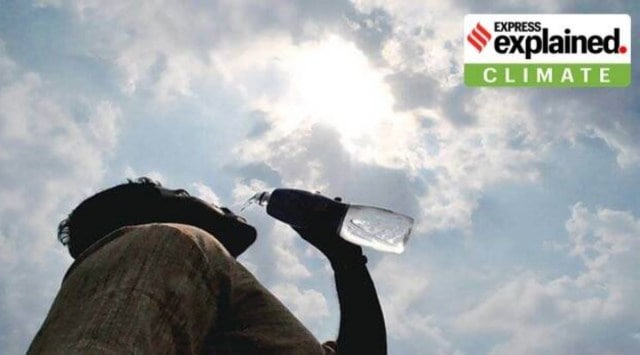After large rainfall deficit in August, how India’s reservoir levels are falling considerably
India’s 150 large reservoirs are a crucial source of water for the rest of the year, for not just households and industry, but also power generation. Storage levels are about 10% below the last 10 years’ average for this time of the year.
 The India Meteorological Department (IMD) has predicted that rainfall in September would not be more than 10% deficient, but the El Niño in the equatorial Pacific Ocean, which is still gaining in strength, continues to be a major threat.
The India Meteorological Department (IMD) has predicted that rainfall in September would not be more than 10% deficient, but the El Niño in the equatorial Pacific Ocean, which is still gaining in strength, continues to be a major threat. The large deficit in rainfall in August, more than 35 per cent, has had an expected impact on the water storage in the country’s reservoirs. The cumulative amount of water in the 150 large and important reservoirs fell below the normal level in August — the first time this has happened since the beginning of the current southwest monsoon season.
The latest data from the Central Water Commission (CWC) show that these 150 reservoirs across the country had about 113 billion cubic metres (BCM) of water as on August 31, which was about 10% below the normal — or average of the last 10 years — storage at this time of the year.
The biggest deficit, unsurprisingly, is in the reservoirs of the southern states, where the rainfall deficiency in August was the largest in the country. The 42 large reservoirs in this region together held about 53 BCM of water on August 31, which represents 49% of their combined capacity.

In the normal course, these reservoirs are full to about 67% of their combined capacity at this time of the year.
Since the bulk of India’s annual rainfall — nearly 75% — comes during the four-month southwest monsoon season, these reservoirs are a crucial source of water supply for the rest of the year, catering not just to households and industrial uses, but also for power generation.
August is usually the month when these reservoirs see their storage levels going up. August is the year’s second rainiest month, accounting for nearly 22% of the annual rainfall. July, the rainiest month, contributes 24%.
But August 2023 was the driest August in the more than 120 years for which records are available. The month produced only about 162 mm of rain in the country as a whole, instead of the almost 255 mm that is expected, a deficiency of 36%.

Central India had a rainfall deficiency of 47%, while South India had a 60% deficit in August. The East and Northeastern region was the only one that received normal rainfall. Not surprisingly, this is also the only region where water levels in the reservoirs did not show a declining trend in August.
The dry August also resulted in an unexpected increase in power demand, mainly for irrigation activities. Power generation touched a record high in August, Reuters reported. Because water levels in the reservoirs were already precarious, this extra demand could not have been met through hydropower — it was, therefore, met through additional generation by coal-fired power plants.

The Reuters report said the share of coal in India’s total power generation increased to 66.7% in August, the highest for the month in six years. The burning of extra coal is bad optics from the perspective of international climate change discussions, even though India has insisted that it would continue to rely on coal for its electricity demand in the foreseeable future.
The first half of September is expected to bring decent rainfall, especially in the southern region — and this might result in an improvement of the situation of the reservoirs. Many parts of South India have already experienced good rainfall in the first five days of the month.
The India Meteorological Department (IMD) has predicted that rainfall in September would not be more than 10% deficient, but the El Niño in the equatorial Pacific Ocean, which is still gaining in strength, continues to be a major threat.
- 01
- 02
- 03
- 04
- 05






































